Impact of Plant-Based Meat Alternatives on Cattle, Beef Industry and Greenhouse Gas Emissions
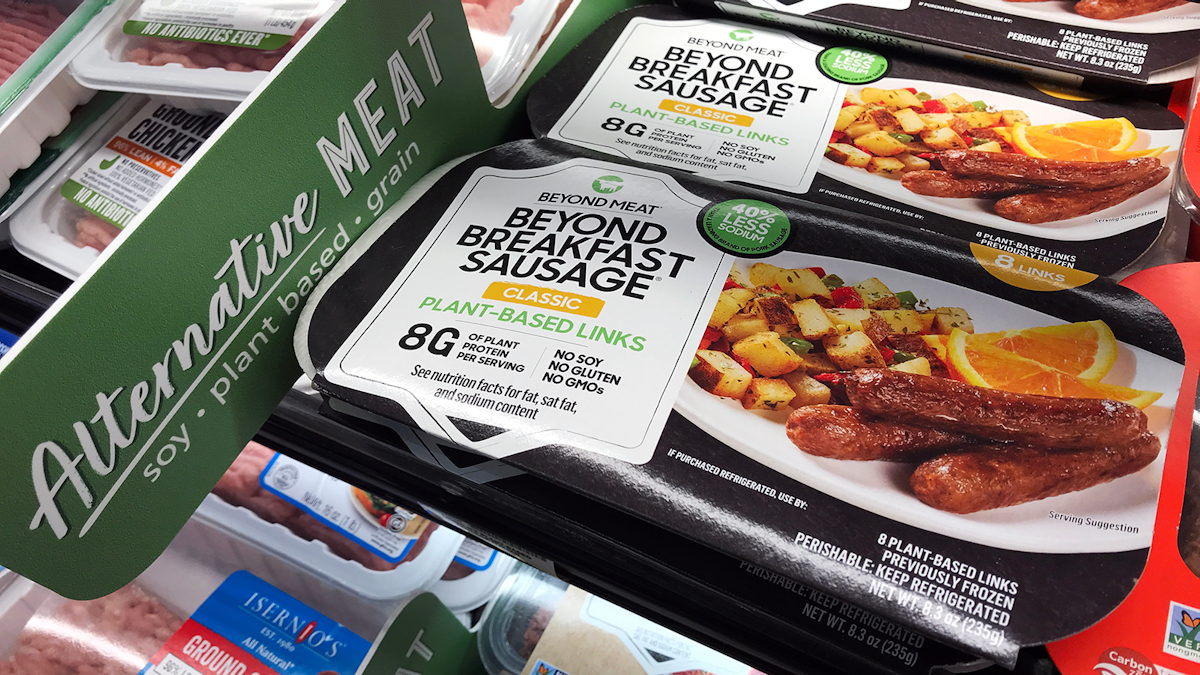
-
-
Share
-
Share via Twitter -
Share via Facebook -
Share via Email
-
Plant-based meat alternatives from Beyond Meat, Impossible Foods, and other companies could have a significant impact on the economy, environment, and animal welfare if they replace animal-based meats and reduce livestock production. However, much depends on the extent to which consumers are willing to shift their diets, the structure of the meat industry, and the inter-linkages of the livestock industry with the other parts of the economy. Because of this, explain Jayson Lusk, Glynn Tonsor, and Breakthrough’s Dan Blaustein-Rejto and Saloni Shah in a new paper in Environmental Research Letters, the effects of plant-based meat will be modest in the short term.
Prices for plant-based meat are currently substantially higher than those for animal-based meats. For example, plant-based burgers are about 65% more expensive than animal-based ones in the US.
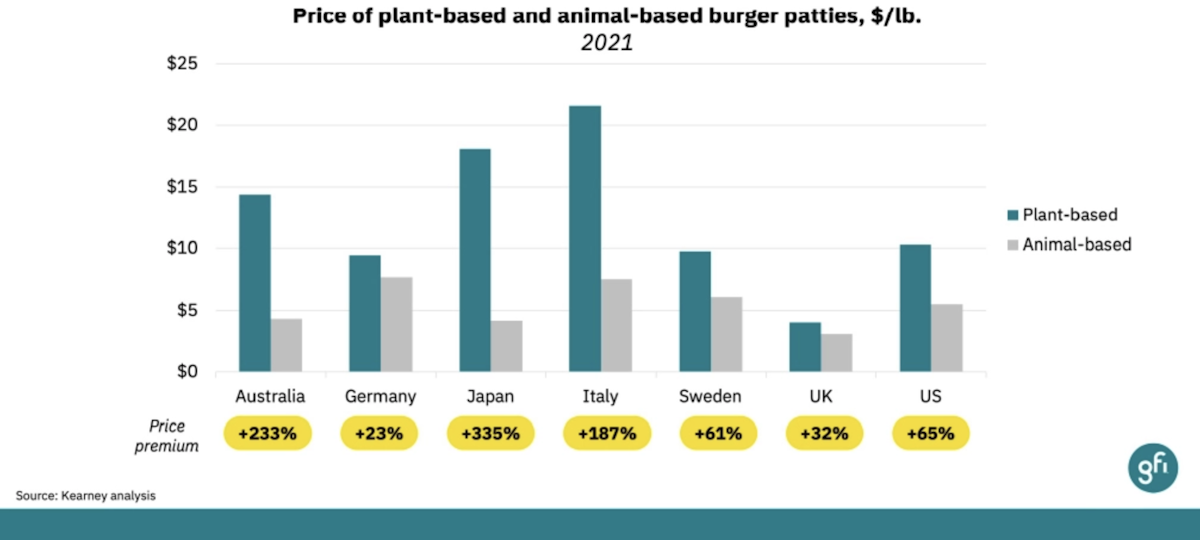
However, prices are falling. For example, in 2021, Impossible Foods cut the price of its burger patties by 20% at U.S. grocery stores. Beyond Meat’s production costs and, in turn, prices have fallen at a similar pace.
Our new analysis, previously published as a pre-print, projects how continued declines in the price of plant-based ground beef will affect cattle and beef production, as well as beef industry profits, land use, and climate change. We find that a 10% price reduction, which we might expect to see within the next year, would have a minimal effect on US cattle production. We project that while it would reduce ground beef production by about 1.2%, it would only reduce the number of cattle slaughtered by 0.15%. The shift in demand would also only modestly reduce cattle and beef prices.
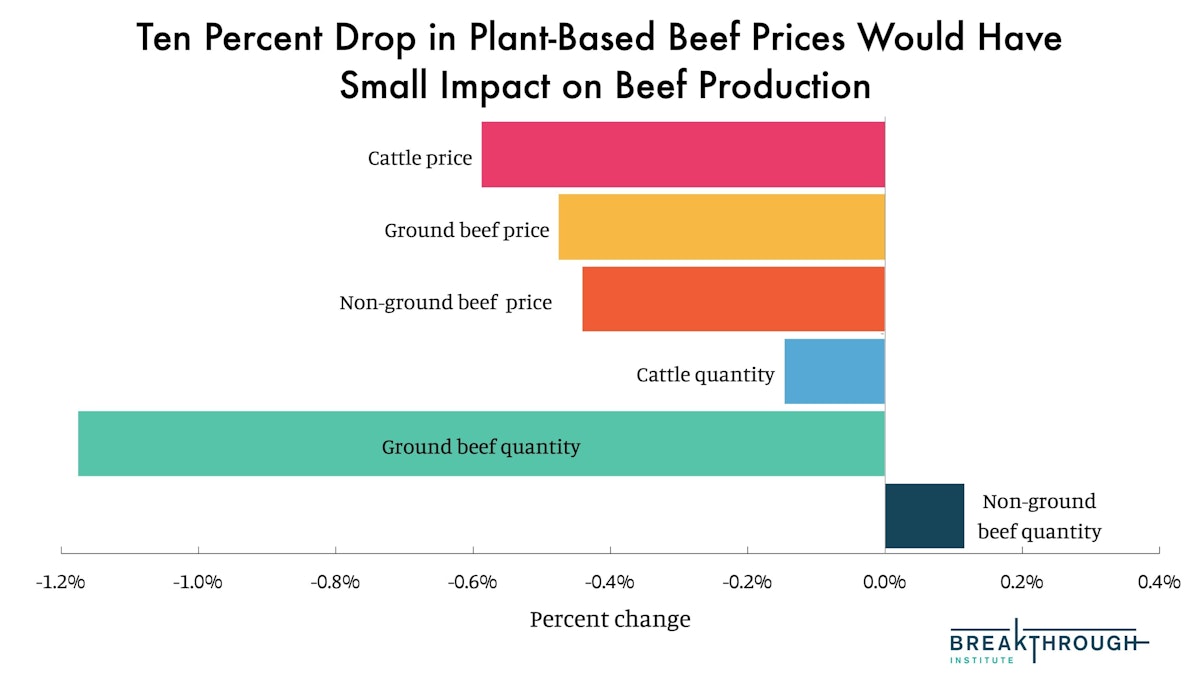
The decline in production and prices would put downward pressure on the revenue and profits of cattle producers, packers, and input suppliers to the cattle industry. Yet like the decline in prices and production, it would be limited—an order of magnitude less than the average year-to-year variation.
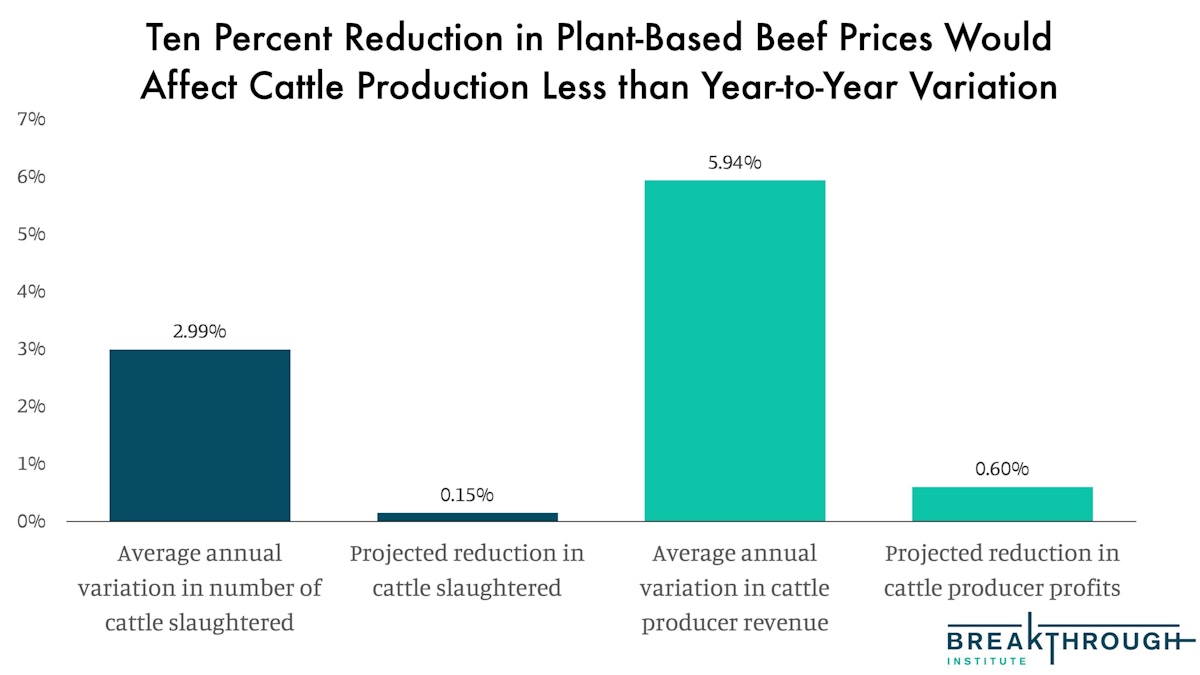
There are several reasons for this modest impact:
- Plant-based beef and meat consumption are currently low, accounting for 1.4% of US meat sales. Even a large percentage increase in consumption would still result in a relatively low market share, moderating the effect on animal-based meat consumption and production.
- Consumers only partially substitute plant-based meat for conventional meat, meaning that an increase in plant-based meat consumption doesn’t proportionately reduce animal-based meat consumption.
- Plant-based beef is primarily a substitute for ground beef. When ground beef demand declines, cattle producers can sell more meat as sirloins, chucks, ribs, and other non-ground products.
More than 10% of beef produced in the US is exported. When domestic beef demand declines, cattle producers can increase exports. - Cattle are typically raised for about 18 months, so producers can’t quickly shift production to respond to market changes. In the long run, we expect plant-based beef price declines to have a modestly (~12%) larger effect on the number of cattle slaughtered, but a smaller one on producer profits.
Due to these economic dynamics, we project a reduction in plant-based beef prices would also have only modest environmental benefits.
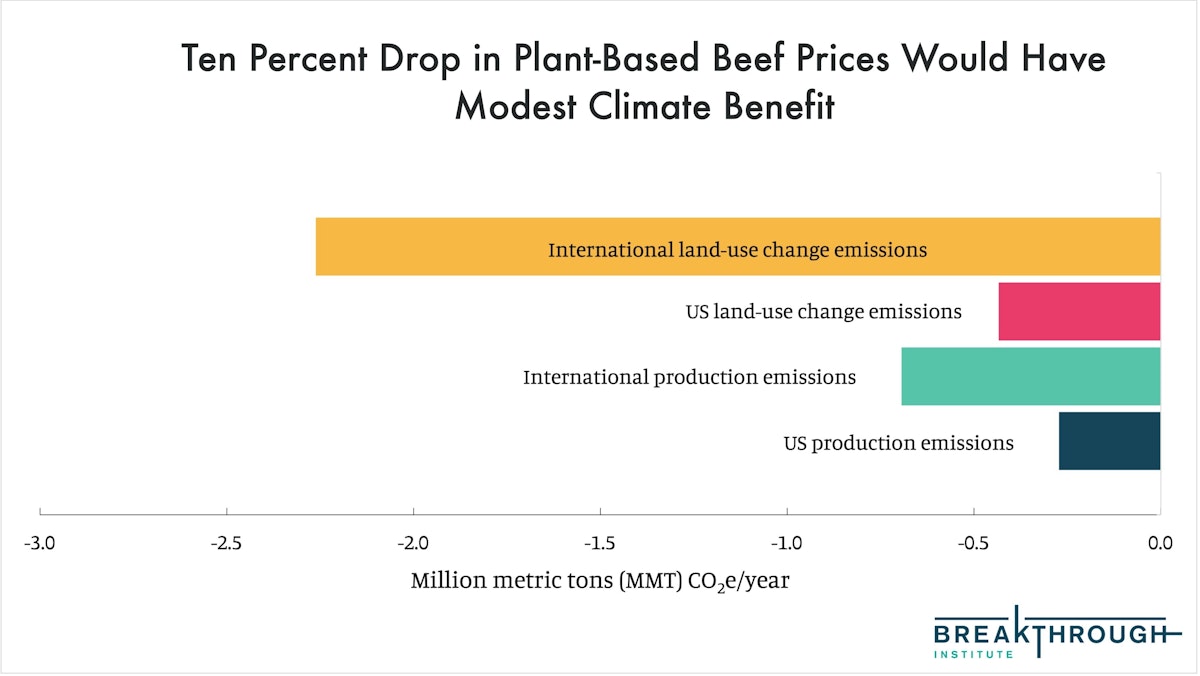
As detailed in another recent report, “The Case for Public Investment in Alternative Proteins,” to capture more consumer demand in the future and to have greater environmental benefits, the taste and texture of alternative meats must continue to improve and new types of products, such as substitutes for whole cuts of meat, must be developed. This will likely require fundamental, government-funded research as well as public support for scaling up new alternative meat technologies and more dramatically reducing costs.
But improving the environmental sustainability of meat cannot solely rely on alternative meat. As we described in The Clean Cow, the development and adoption of a suite of practices and technologies, such as methane-reducing feed additives, is also needed to reduce greenhouse gas emissions and other impacts from livestock production.

